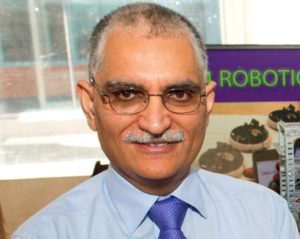Professor Vikram Explains the Integration of Mixed Reality/Augmented Reality/Virtual Reality into Various Technologies
 IEEE Senior Member Vikram Kapila, Professor, Department of Mechanical and Aerospace Engineering Director, Mechatronics, Controls, and Robotics Laboratory New York University, Tandon School of Engineering
IEEE Senior Member Vikram Kapila, Professor, Department of Mechanical and Aerospace Engineering Director, Mechatronics, Controls, and Robotics Laboratory New York University, Tandon School of Engineering
IEEE Transmitter: How can MR/AR/VR benefit the world’s next leaders in research and teaching, medicine and exploration (e.g. space, underwater, archaeology)?
Professor Kapila: The MR/AR/VR technologies can benefit the world’s next leaders by allowing their frictionless integration in applications that employ convergent-technologies, e.g., robotics, computer vision, machine learning, additive manufacturing, among others. Similar to open-source hardware and software platforms such as Arduino, Raspberry Pi, ROS, OpenCV, etc., development, dissemination, and deployment of corresponding open-source hardware and software for MR/AR/VR can enable researchers from disparate domains to explore these technologies.
Compelling use-cases will further showcase broad utility of these technologies to potential users. These technologies can of course facilitate highly intuitive, natural, and immersive telerobotics which is highly relevant to remote exploration in space, underwater, and archaeology; remote observation of land and sea creatures without human invasion of their natural habitat; as well as in surgery. MR/AR/VR have myriad applications in education, for example, laboratory education, anatomy, astronomy, engineering graphics, spatial relations, etc. Moreover, in a manufacturing environment, maintenance workers can benefit from the MR/AR/VR technologies during inspection and repair operations.
See the full story here; https://transmitter.ieee.org/professor-vikram-explains-integration-mixed-reality-augmented-reality-virtual-reality-various-technologies/
Pages
- About Philip Lelyveld
- Mark and Addie Lelyveld Biographies
- Presentations and articles
- Tufts Alumni Bio